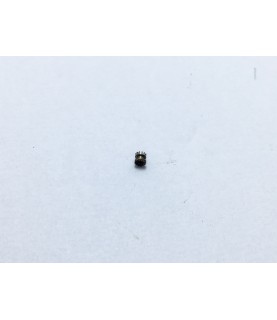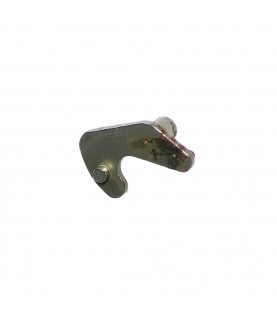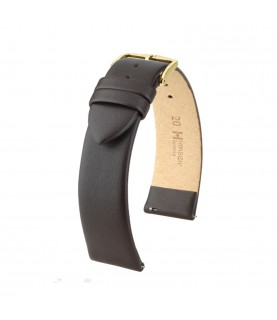Casio QW-1160 service manual and operations guide
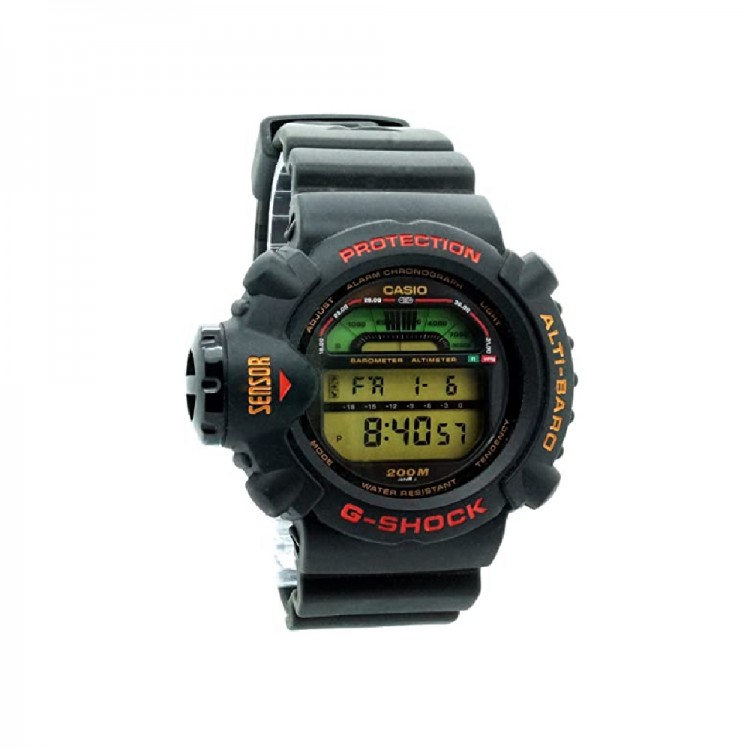
Press C to change from mode to mode. After you perform an operation in any mode, pressing C returns to the Timekeeping Mode.
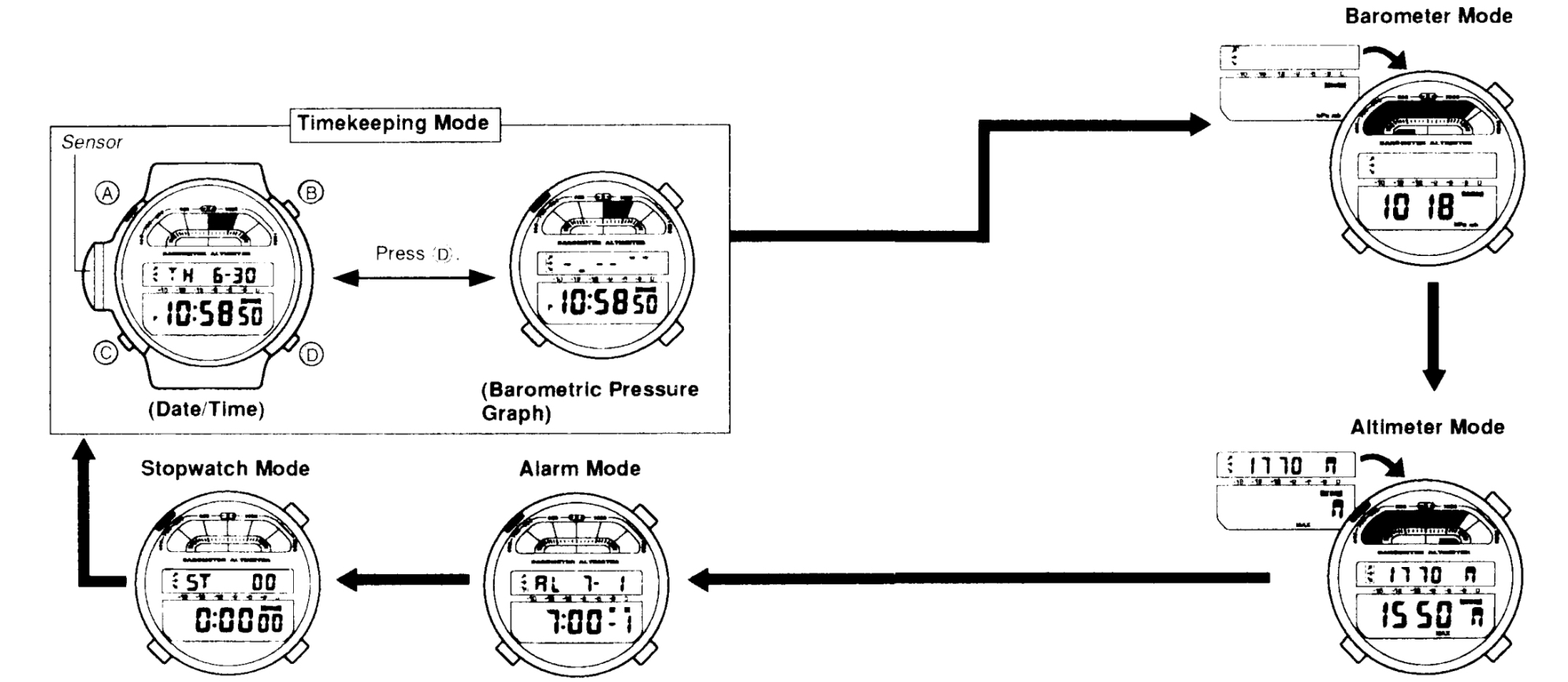
Timekeeping Functions
In the Timekeeping Mode, hold down B to illuminate the display.
For details on information shown in the graphic display, see “Reading the barometric pressure graph”.
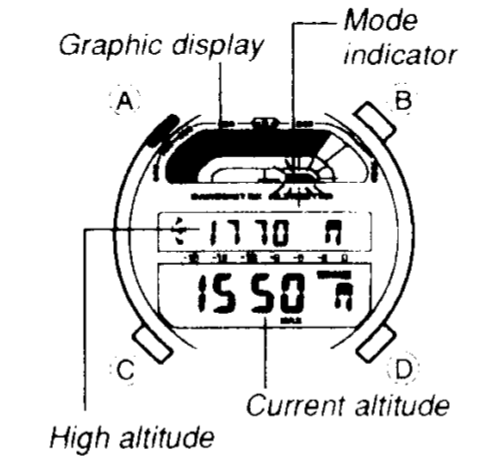
You can set the time and date in the Timekeeping Mode, which you can enter using C.
To set the time and date
In the Timekeeping Mode, press D until the Date/Time display appears.
Press A and the seconds digits start to flash on the display because they are selected.
Press C to change the selection in the following sequence.

While the selection is flashing, press B to switch between 12-hours and 24-hours formats.
While the seconds digits are selected (flashing), press D to reset the seconds to “00”. If you press D while the seconds count is in the range of 30 to 59, the seconds are reset to “00” and 1 is added to the minutes count is unchanged.
While any other digits (besides seconds) are selected (flashing), press D to increase the number. While the day of the week is selected, pressing D advances to the next day. Holding down D changes the current selection at high speed.
After you set the time and date, press A to return to the Timekeeping Mode.
The watch does not make any allowance for leap years. Be sure to manually set February 29 (when one one occurs) to the appropriate date.
If you do not operate any button for a few minutes while a selection is flashing, the flashing stops and the watch goes back to the Timekeeping display automatically.
Barometer Functions
This watch uses a pressure sensor to measure atmospheric pressure.
The readout from the pressure sensor can also be switched between hecto-pascals (hPa)/millibars (mb)* and inchesHg (inHg). The barometer can be calibrated to correct for measurement error.
Some countries call to this unit as hecto-pascal (hPa), while other countries call it millibars (mb). It really makes no difference, because 1 hPa = 1 mb. In this manual, we will refer to hPa.mb or hPa (mb).
Important!
The barometer that is built into this watch measures changes in atmospheric pressure, which you can then apply to your own weather predictions. It is not intended for use as a precision instrument in official weather prediction or reporting applications.
The graphic display also shows the change between the latest barometric reading and the one before it.
The barometric pressure graph shows data for the past 18 hours.
The flashing point on the right of the display is the point for the last measurement.
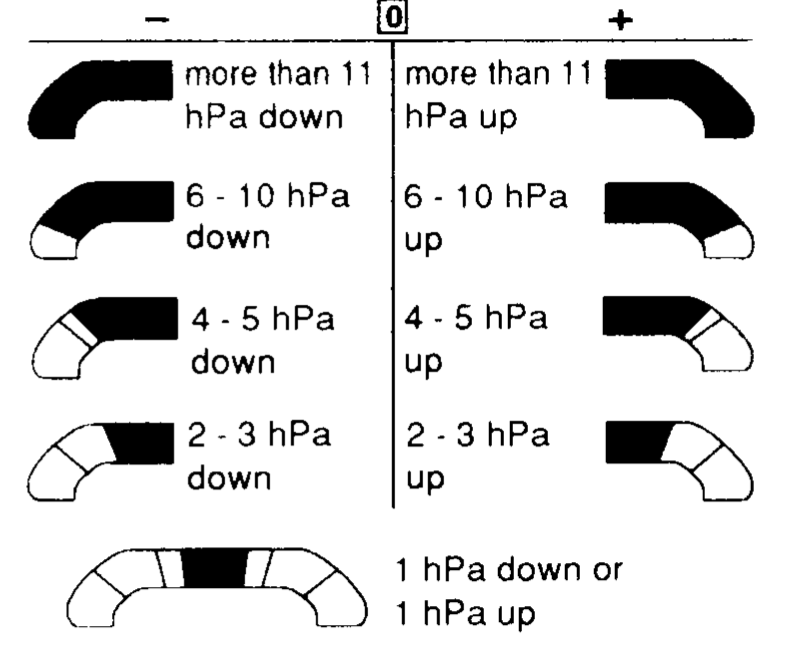
Using the barometric pressure
When readings show two or more rises in barometric pressure, it generally means better weather is on the way.
When readings show two or more drops in barometric pressure, it generally means deteriorating weather.
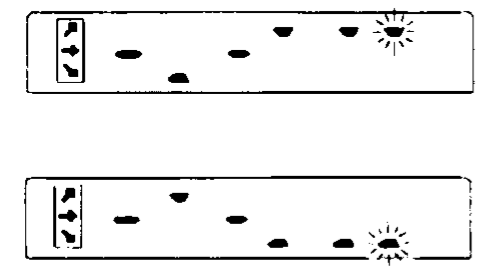
The following conditions cause the barometric pressure measurement to be skipped, with the corresponding point on the barometric pressure graph being left blank.
Barometric reading is out of range (600 hPa/mb to 1100 hPa/mb or 17.70 inHg to 32.45 inHg)
Sensor malfunction
Dead battery
Avoid changing the current time setting in the Normal Timekeeping mode during barometric measurement taken between 30 seconds and 10 seconds before the hours of midnight, 3:00, 6:00, 9:00, noon, 15:00, 18:00, and 21:00. Doing so will cause that measurement to be aborted. The next measurement will not be taken (and shown on the barometric pressure graph) until six hours after the time setting change.
Barometer Mode
In addition to readings taken for the barometric pressure graph, there is also a Barometer Mode that you can use for measuring barometric pressure. As soon as you enter the Barometer Mode, measurements are taken every 9 seconds for the first five minutes. After that, measurements are taken every minute. You can store the current barometric pressure info memory at any time. You can compare the stored data with new readings that are produced.
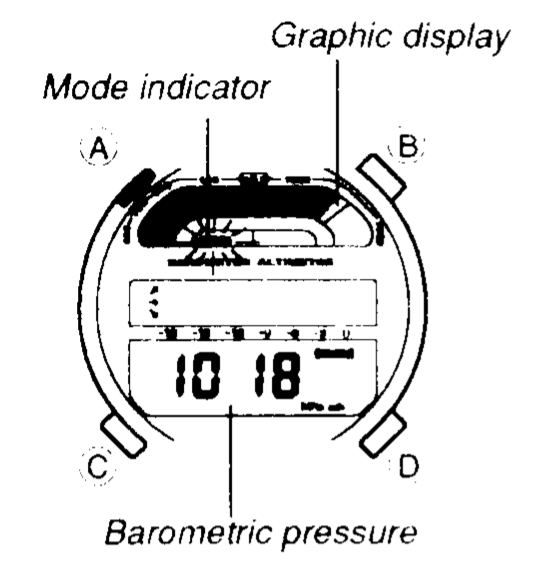
The mode indicator flashes on the display while a barometric measurement procedure is being performed.
Pressing D in the Barometer Mode resets the measurement cycle minutes after you press D, and then every minute after that).
The display unit for Barometer Mode measurements is 1 hPa/mb (or 0.05 inHg), and the display range is 600 hPa/mb to 1100 hPa/mb (or 17.70 inHg to 32.45 inHg).
The display shows “FULL” if a measured value falls outside the measuring range. The normal display will return as soon as the pressure returns within the allowable range.
If you do not press any button for about one hour in the Barometer Mode, the display returns to the Timekeeping Mode automatically.
In the Barometer Mode, the graphic display shows changes in barometric pressure. When the barometric pressure is 600 hPa/mb or less, the segment on the far left of the graph is darkened. In the range of 600 to 950 hPa/mb, each rise of 35 hPa/mb causes one more segment to be darkened. In the range of 951 to 1045 hPa/mb, each rise of 5 hPa/mb causes one more segment to be darkened. All segments are darkened when the barometric pressure is 1046 hPa/mb or greater. When the barometric pressure unit is set to inHg. Because of this, the graphic display will show the hPa/mb value before switching to the corresponding inHg value.
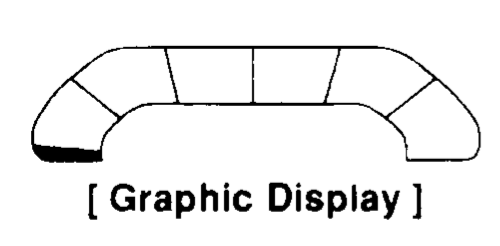
Applications
Before beginning the climb, set the reference altitude to 0 at the foot of the mountain. This makes it possible to determine the difference in altitude between the reference point and your destination.
To determine the height of a tall building, set the reference altitude to 0 m at your house, and then check the reading when you arrive at the other location.
Switching between meters and feet
Use C to enter the Altimeter Mode.
Press A twice. At this time the currently set unit (M or F) appears flashing on the display.
Press C to select either meters (M) and feet (F).
After you select “M” or “F”, press A to return to the Altimeter Mode.
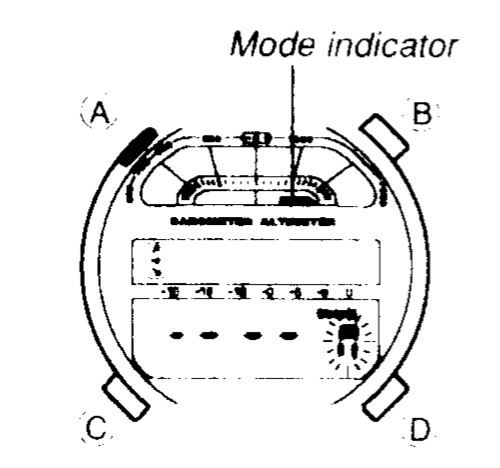
Altimeter Mode
The Altimeter Mode automatically measures your current altitude. As soon as you enter the Altimeter Mode, measurements are taken every 9 seconds to the first five minutes. After that, measurements are taken every minute. Pressing D in the Altimeter Mode resets the measurement cycle (causing measurement to be taken every 9 seconds for the first five minutes after you press D, and then every minute after that).
Measurement formats and ranges
Display range: -4000 to 4000 m (or -13120 to 13120 ft.)
Display unit: 5 m (or 20 ft.)
Measuring range: Approximately 4000 meters (or 13120 ft.), withing the range of 4000 to 4000 m (-13120 to 131120 ft.).
Reading the altimeter display
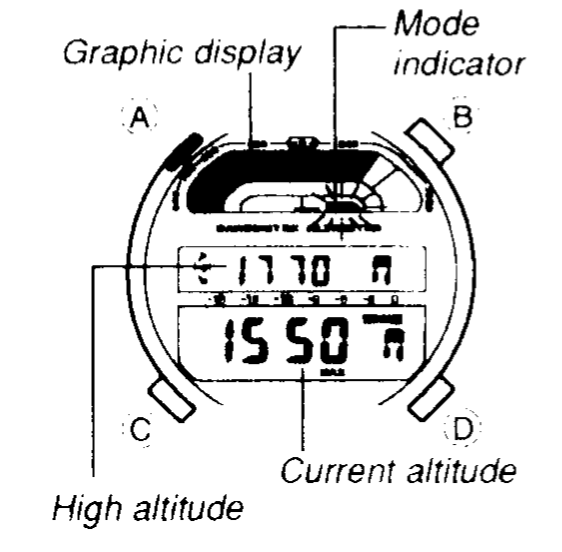
Use C to enter the Altimeter Mode. If you do not press any button for about one hour in the Altimeter Mode, the display returns to the Timekeeping Mode automatically.
The display shows “Full” of a measured value falls outside the measuring range. The normal display will return as soon as the pressure returns withing the allowable range.
The mode indicator flashes on the display while an altimeter measurement procedure is being performed.
In the Altimeter Mode, the graphic display shows changes in altitude. When the altitude is 50 meters (200 feet) or less, the segment on the far left of the graph is darkened. In the range of 50 to 1005 meters (200 to 4020 feet), each increase of 50 meters (200 feet) causes one more segment to be darkened. In the range of 1005 to 2805 meters (4020 to 9420 feet), each increase of 200 meters (800 feet) causes one more segment to be darkened. All segments are darkened when the altitude is 2805 meters (9420 feet) or greater.

High altitude memory
The high altitude memory automatically stores the highest measured altitude into memory.
To clear the current high altitude value from memory, hold down B while in the Altimeter Mode until the value is cleared. After you clear the memory, the next altitude measurement is stored as the new high altitude.
Note that only positive values can be stored in the high altitude memory. If you are at a negative altitude when you clear the high altitude memory, no high altitude value will appear on the display.
Alarm functions
Alarm Functions are available in the Alarm Mode, which you can enter using C
You can set three independent alarms with hour, minutes, month and date.
When the alarm is on, the alarm sounds for 20 seconds at the preset time. Press any button to stop the alarm after it starts to sound.
When the Hourly Time Signal in on, the watch beeps every hour on the hour.
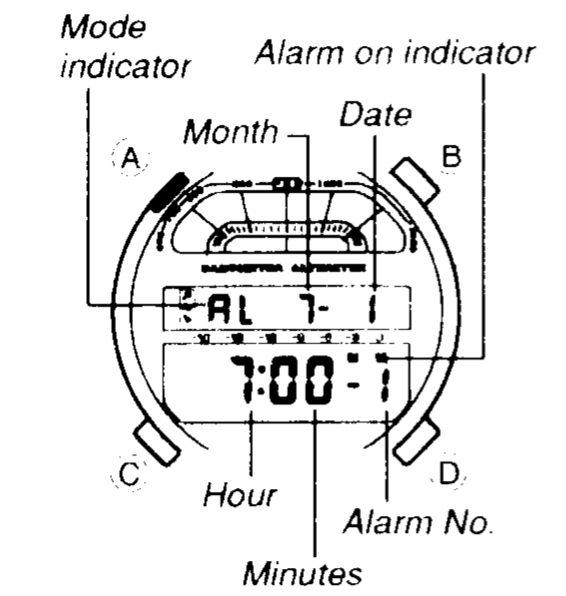
Alarms Types
The type of alarm depends on the information you set.
To set a Daily alarm
Set the hour and minutes for the alarm time. Set “-” for the month and “--” for the date (see step 4 under “To set alarms”). This type of setting causes the alarm to sound every day at the time you set.
To set a Date alarm
Set the month, date, hour and minutes for the alarm time, This type of setting causes the alarm to sound at the specific time, on the specific date you set.
To set a 1-Month alarm
Set the month, hour and minutes for the alarm time. Set “--” for the date (see step 4 under “To set alarms”). This type of setting causes the alarm to sound every day at the tie you set, only during the month you set.
To set a Monthly alarm
Set the date, hour and minutes for the alarm time. Set “-” for the month (see step 4 under to “To set alarms”). This type of setting causes the alarm to sound every month at the time you set, on the date you set.
Top set alarms
Press D while in the Alarm Mode to select Alarm 1 through Alarm 3.

After you select and alarm, press A. The hour digits flash on the display because they are selected.
At this time, the alarm is automatically switched on.
Press C to change the selection in the following sequence.

Press D to increase the selected digits. Holding down D changes the selection at high speed.
To set an alarm that does not include a month (daily alarm monthly alarm), set “-” for the month. Press D until the “-” mark appears (between 1 and 12) while the month digits are flashing.
To set and alarm that does not include date (daily, alarm, 1 month alarm), set “--” for the date. Press D until “--” mark appears (between 1 and 31) while the date digits are flashing.
The format (12-hour and 24-hour) of the alarm time matches the format you select for normal timekeeping.
When setting the alarm time using the 12-hour format, take care to set the time correctly as morning or afternoon (P).
After you se the alarm, press A to return to the Alarm Mode.
To switch an alarm or the Hourly Time Signal on and off
In the Alarm Mode, press D to select an alarm or the Hourly Time Signal.
When the alarm or Hourly Time Signal you wan to is selected, press B to switch it on and off.
To test the alarm
Hold down D while in the Alarm Mode to sound the alarm.
How altitude is expressed
There are two standard methods of expressing altitude: Absolute altitude and relative altitude. Absolute altitude expresses an absolute height above sea level. Relative altitude expresses the difference between the height of two different places.

Example: To obtain readings that are close to absolute altitude.
When you are out hiking or mountain climbing, calibrate the altimeter using an altitude value from another source (a signpost or map, for example). Do this just before you start your altitude measurements
At Point A, calibrate the diameter to 400 meters.
Proceed from Point A to Point B, taking altimeter measurements along the way.
If you also have altitude data for Point B, you should again calibrate the altimeter there.
Be sure to recalibrate at Point B if changing weather conditions produce altitude readings errors.
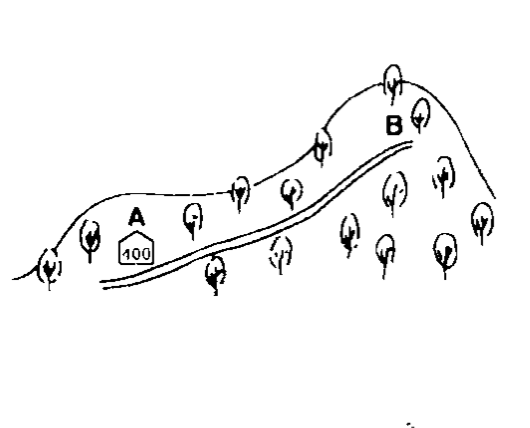
The following conditions will prevent you from obtaining accurate readings:
Atmospheric pressure changes because of changes in the weather
Extreme temperature changes
Subjecting the watch to strong impact
How to interpret barometric readings
Barometric pressure indicates changes in barometric conditions, and you can predict weather with reasonable accuracy by monitoring there changes. Rising barometric pressure indicates good weather, while falling pressure indicates deteriorating weather conditions.
The barometric pressure yo see in the newspaper and on TV weather reports are measurements that are corrected to 0 m sea level values.
Example barometer applications
Measurement of barometric changes while hiking to predict coming weather.
Measurement of barometric differences at different altitudes while mountain climbing.
Prediction of weather for gold or other outdoor activities.
To switch between hecto-pascals/millibars and inchesHg
Use C to enter the Barometer Mode.
Hold down A and C until the barometric pressure value starts flashing on the display.
Press C to select either hecto-pascals (hPa)/millibars (mb) or inchesHg (inHg).
After you select the unit of measurement, press A to return to the Barometer Mode.
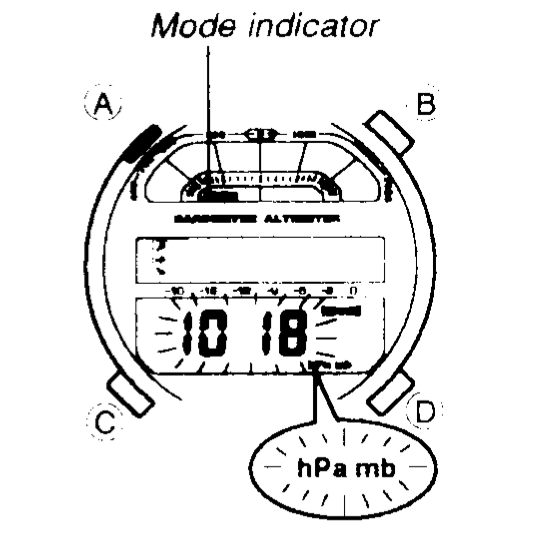
Barometric Pressure Monitor Function
The Barometric Pressure Monitor Function automatically takes barometric readings every three hours (starting from midnight). The measured values are shown on a barometric pressure graph that shows changes in pressure at a glance.
Measurements are performed every three hours (starting from midnight). Three 3-second readings are taken and the average of the three readings is applied as the measured value.
The barometric pressure graph is shown on the display in the Timekeeping Mode.
Reading the barometric pressure graph
Use C to enter the Timekeeping Mode and then press D to display the Barometric Pressure Graph.
Example: When the current time is 10:58 PM
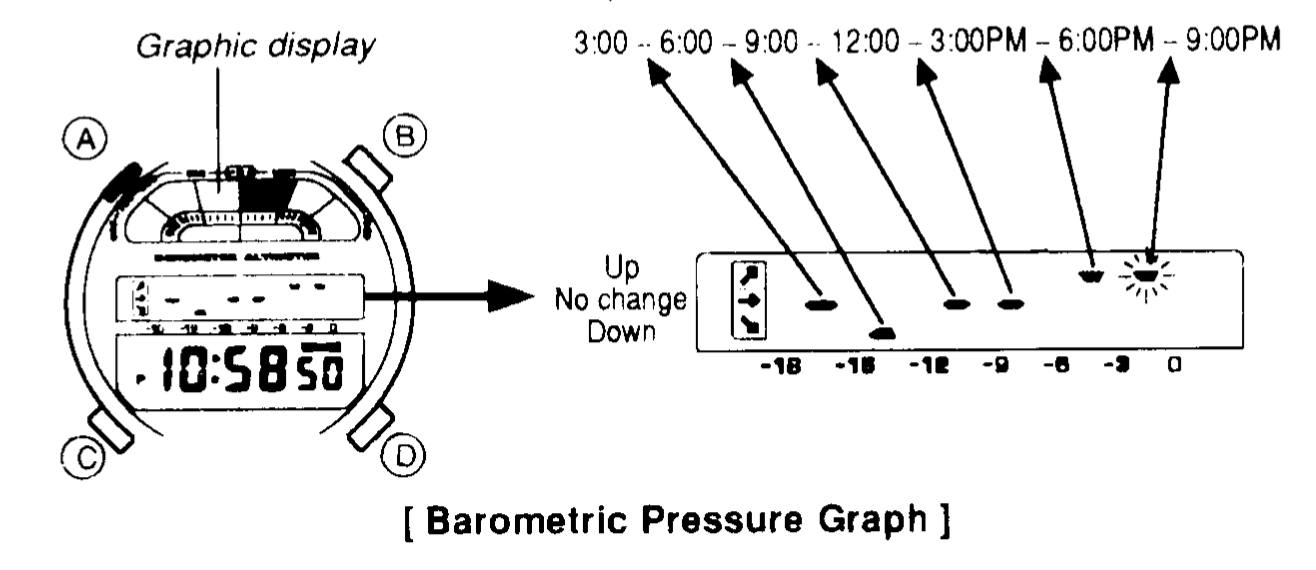
To store a barometric pressure value into memory
While in the Barometer Mode, press B to store the barometric pressure value shown in the lower display into memory. When you do, the value moves into the upper display and the indicator MEMO appears at the bottom of the display.
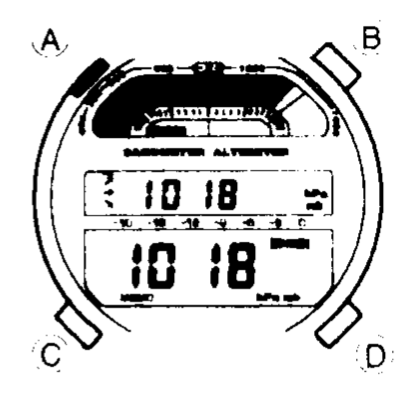
You can keep only one barometric pressure value into memory at one time. To store a new value, you must first delete the value that is already there. To clear a stored value, hod down B until the value in the upper display disappears.
Measurement formats and ranges
Display range: 600 to 1100 hPa/mb (or 17.70 to 32.45 inHg)
Display unit: 1 hPa/mb (or 0.05 inHg)
Measuring range: 600 to 1050 hPa/mb (or 17.70 to 31.00 inHg)
Calibration of the watch can result in values greater than 1050 hPa/mb (or 31.00 inHg) to be displayed.
Calibrating the atmospheric pressure measurement
The sensor of this watch is calibrated at the factory before shipment and further adjustment is normally not required. If noticeable error is found in the atmospheric pressure readings produced by the watch, you can adjust it to correct the error..
Important
Incorrectly adjusting the atmospheric pressure measurement of this watch can result in incorrect readings. Compare the readings produced by the watch with those of another reliable, accurate barometer.
To calibrate the barometer
- Use C to enter the Barometer Mode.
- Hold down A and C until the barometric pressure value starts flashing on the display.
- Each press of D increases the displayed barometric pressure by 1 hPa.mb, while pressing B decreases it. Holding down either button changes the value at high speed.
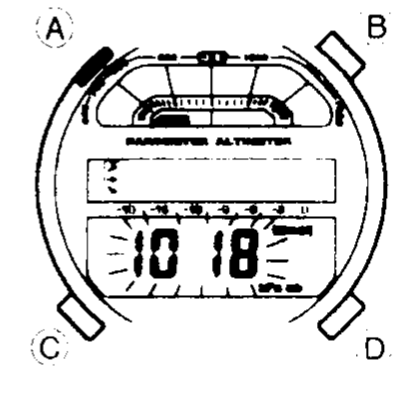
- If you have selected inHg as your unit of measurement, the above operations change the reading by 0.05 inHg.
- Barometric pressure can be calibrated withing the range of 600 hPa/mb to 1100 hPa/mb (or 17.70 inHg to 32.45 inHg)/
- Pressing B and D at the same time resets the watch its factory calibration.
- After calibrating the barometer, press A to return to the Barometer Mode.
- After you press A, numbers appear on the display to indicate that the watch is making internal adjustments. This operation takes about nine seconds. Once adjustments are finished, the barometric pressure value appears.
Altimeter functions
A built-in altimeter uses a pressure sensor to detect the current air pressure, which is then used to estimate the current altitude in accordance with ISA (International Standard Atmosphere) values for altitude and air pressure. If you preset a reference altitude, the watch will also calculate the current relative altitude bases on your preset value. Altimeter functions also include high altitude storage memory and an altitude alarm.
The readout from the pressure sensor can be switched between meters (M) and feet (F).
Important !
This watch estimates altitude bases on air pressure. This means that altitude readings for the same location may vary if air pressure changes.
Sudden changes in the weather make it impossible to produce accurate altitude readings.
D not use this watch while participating in sports where there are sudden altitude changes. Also, do not use this watch for applications that demand professional or industrial level precision. This watch should not be used while engaging in the following activities: sky diving, hand gliding, paragliding, gyrocopter riding, glider riding, etc.
In order to avoid measurement problems caused by differences in the watch's temperature, be sure to wear the watch so that it comes into direct contact with your skin.
Setting a reference altitude
After you set a reference altitude, the watch automatically calculates the difference between the current altitude and your preset value. The altitude measurements produced by this watch are subject to error caused by changes in atmospheric pressure. Because of this, we recommend that you set the reference altitude during your climb whenever one is available.
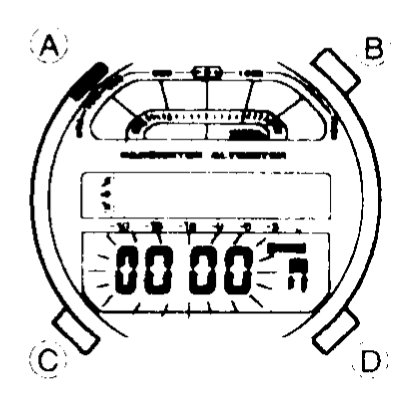
Enter the Altimeter Mode and press A. When you do, the currently set reference altitude flashes on the display.
Each press of D increases the displayed altitude value by 5 m while pressing B decreases it. Holding down either button changes the value at high speed.
If you have selected feet as your unit of measurement, the above operations change the reading by 20 ft.
You can calibrate the altitude within the range 0 m to 4000 m (or 0 ft. to 13120 ft.).
Pressing B and D at the same time resets the reference altitude to 0000.
After calibrating the altimeter, press A to return to the Altimeter Mode.
After you press A, the numbers on the display indicate that the watch is making internal adjustments. This operation takes about nine seconds. Once adjustments are finished, the altitude display appears.
If you change the unit of altitude measurement (M or F) after setting a reference altitude, the reference altitude you set is automatically cleared to 0000 and the factory setting is applied.
About the Altitude Alarm
The altitude alarm sounds for about five seconds whenever the current altitude matches a preset value. You can press any button to stop the alarm after it starts to sound.
Remember that the altitude alarm sounds only in the Altimeter Mode.
Example
If you set the altitude alarm at 130 meters, it sounds when you pass the 130-meter mark on your way up and on your way back down.
To set the altitude alarm
Enter the Altimeter Mode and press A. When you do, the currently set reference altitude flashes on the display.
Press C to display the altitude alarm setting screen. At this time, the indicator “AL” appears on the display.
Press D to increase the altitude alarm value by 5 m or B to decrease it. Holding down either button changes the value at high speed.
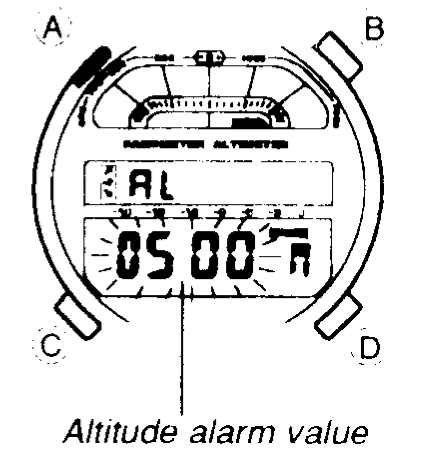
- If you have selected feet as your unit of measurement, the above operations change the setting in increments of 20 feet.
You can set the altitude alarm setting withing the range of -4000 m to 4000 m (-13120 ft. to 13120 ft.).
Setting an altitude value automatically switches the altitude alarm on.
After setting the altitude alarm value, press A to return to the Altimeter Mode.
If you change the unit of altitude measurement (M or F) after setting an altitude alarm, the altitude alarm that you set is automatically switched off.
To switch the altitude alarm off
Enter the Altimeter Mode and press A. When you do, the currently set reference altitude flashes on the display.
Press C to display the altitude alarm setting screen. At this time, the indicator “AL” appears on the display.
Press B and D at the same time to change the setting to “----” and switch the altitude alarm off.
After switching the alarm off, press A to return to the Altimeter Mode.
Stopwatch functions
Stopwatch Functions are available in the Stopwatch Mode, which you can enter using C.
The Stopwatch Functions let you measure elapsed time, split times, and two finishes. The range of the stopwatch is 23 hours, 59 minutes, 59.99 seconds.
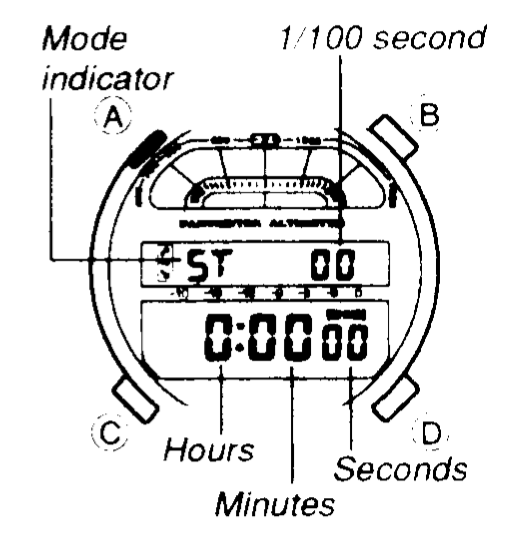
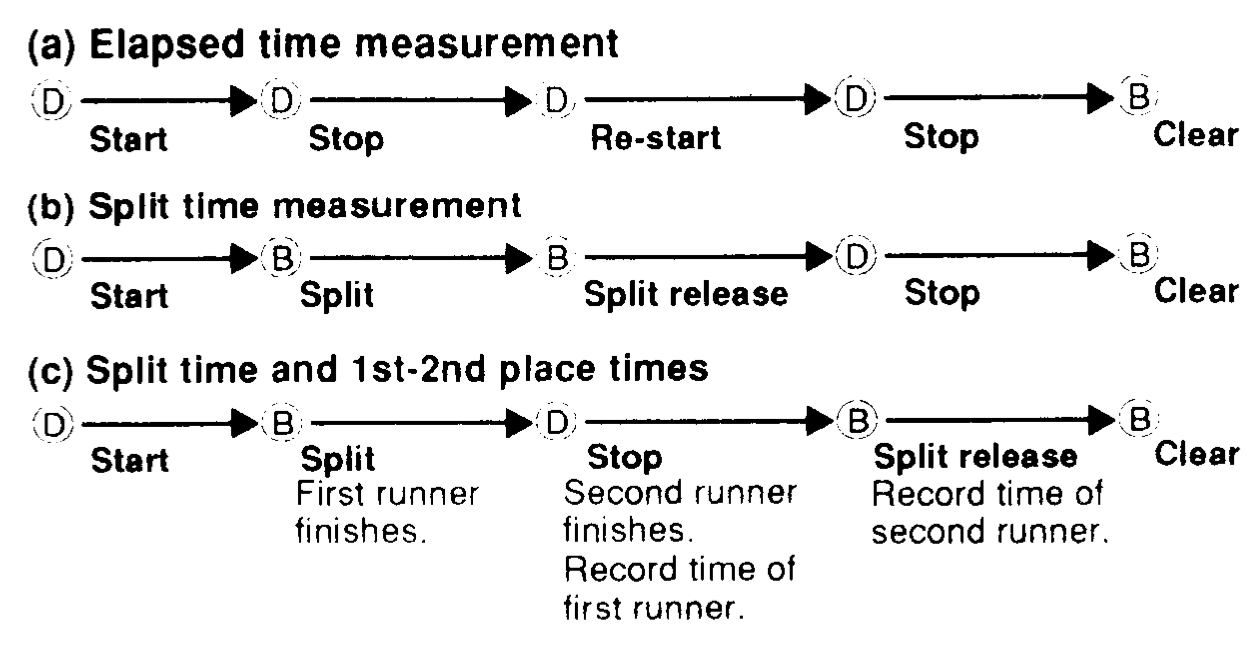
Error warning functions
This watch is designed to automatically stop taking measurements when there is a sensor malfunction, when battery power drops below a certain level, or when temperature drops below about -10 C or (14 F).
Important!
If the sensor is malfunctioning when it comes time for an atmospheric pressure measurement to be taken, the corresponding point on the atmospheric pressure graph is left blank.
There may be cases where the “ERROR” or “BATT” message is cleared once you change modes. In this case, you can continue using the watch normally unless the error warning message reappears.
Things to know about altitudes
Relationships between altitude, barometric pressure, and temperature
Generally, atmospheric pressure and temperature decrease as altitude increases. This watch bases its altitude measurements on International Standard Atmosphere (ISA), values stipulated by the International Civil Aviation Organization (ICAO), which define relationships between alttitude, atmospheric pressure, and temperature.
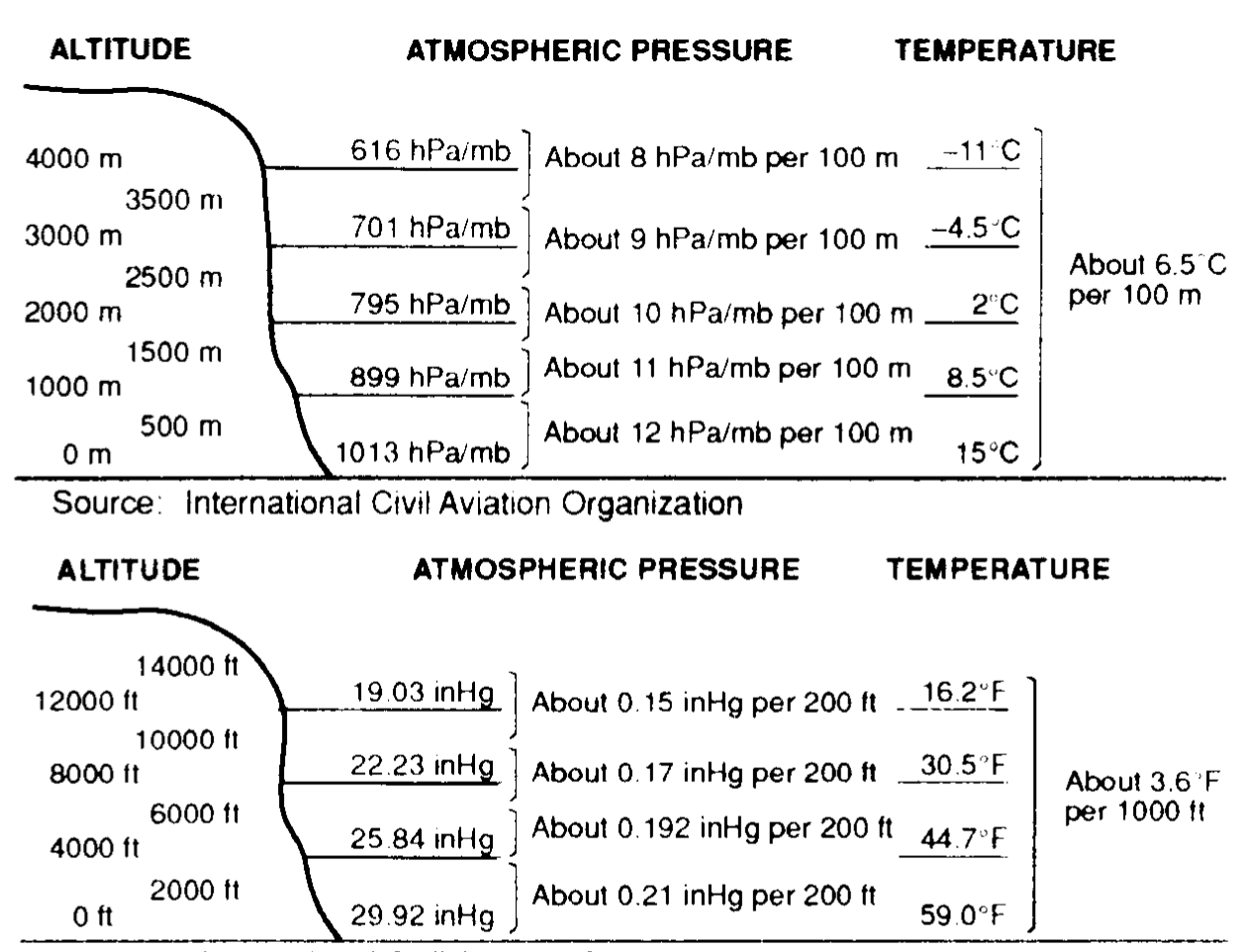
Casio caliber QW-1160 use battery SR927W


